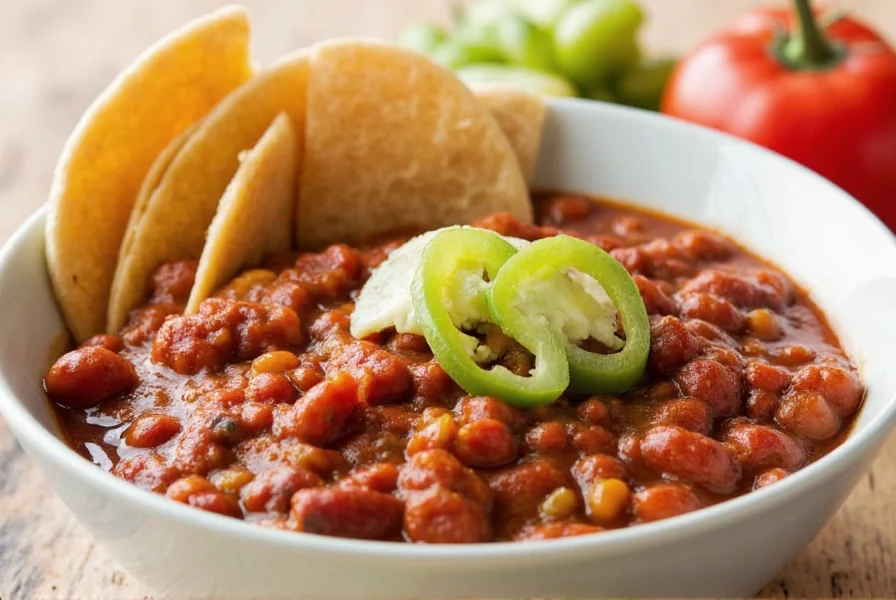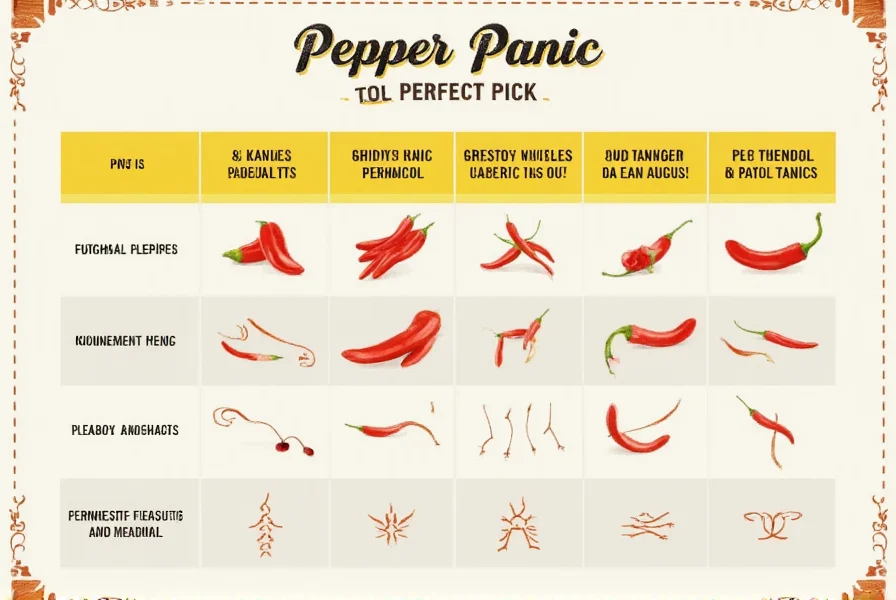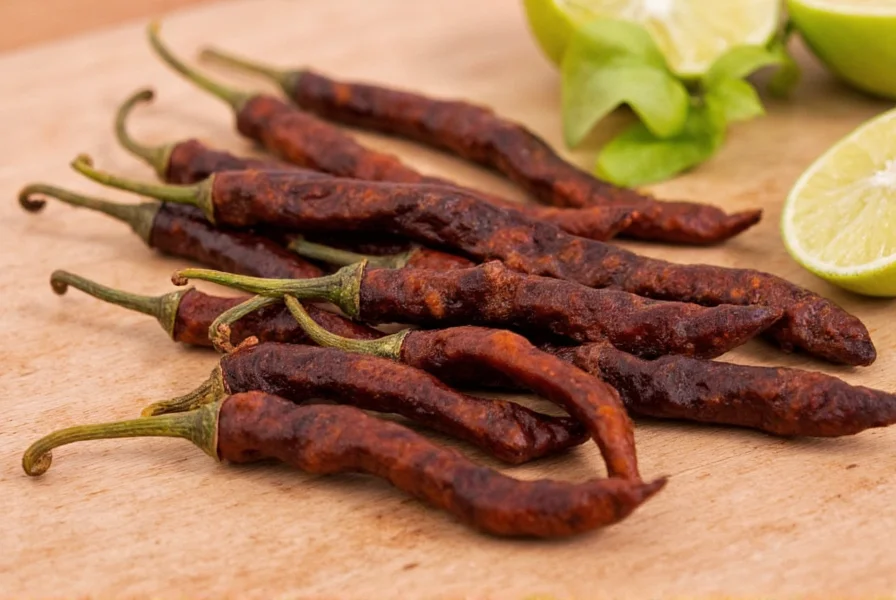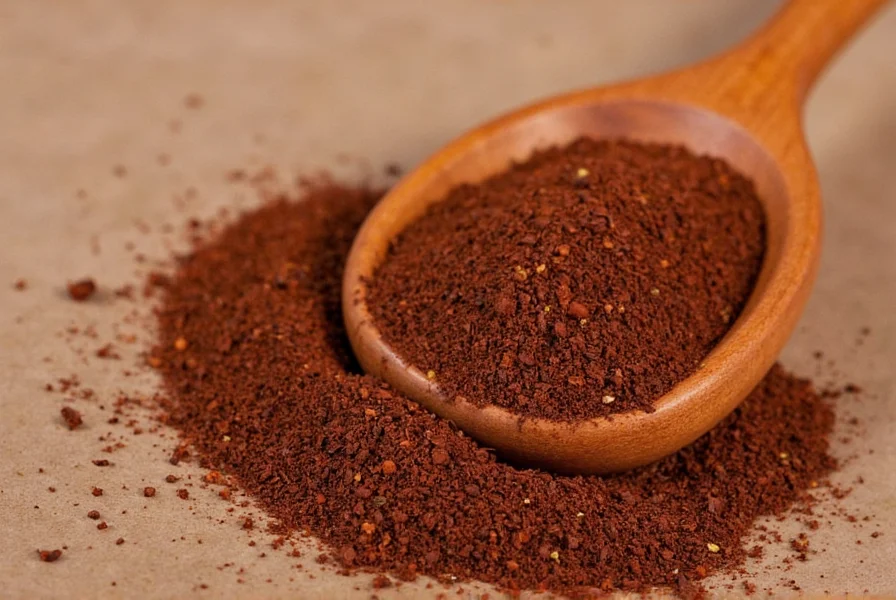Pepper Ancho: The Sweet and Smoky Hero of Mexican Cuisine
Table of Contents
What is Pepper Ancho?
Pepper ancho is one of the most iconic and widely used chili peppers in Mexican cuisine. It's not just a spice—it's a flavor powerhouse that brings a unique blend of sweetness, smokiness, and mild heat to dishes. Derived from the dried poblano pepper, ancho peppers are known for their rich, complex taste and versatility in cooking.
When you first see an ancho pepper, it might look like any other dried chili, but don’t be fooled. Its deep red color and slightly wrinkled texture tell a story of sun-dried transformation. Once rehydrated, it becomes a soft, plump pepper that can be pureed into sauces, ground into powders, or even used whole in stews and braises.
Flavor Profile of Pepper Ancho
If you're looking for a chili that’s sweet, smoky, and mildly spicy, ancho is your go-to. Unlike the fiery habanero or the intense ghost pepper, ancho has a mellow heat level—typically between 1,000 to 1,500 on the Scoville scale. That makes it perfect for those who want a bit of heat without the burn.
Its flavor is often described as earthy, fruity, and slightly tangy, with notes of chocolate and caramel. This complexity makes it ideal for adding depth to salsas, moles, and stews. You can think of it as the unsung hero behind many traditional Mexican recipes.

| Flavor Notes | Description |
|---|---|
| Sweetness | Mild fruitiness with hints of ripe plum and fig |
| Smokiness | Deep, charred aroma reminiscent of grilled vegetables |
| Heat Level | Mild, suitable for most palates |
| Earthy | Subtle undertones of soil and dry herbs |
Common Uses of Pepper Ancho
Ancho peppers are incredibly versatile and show up in a wide range of dishes across Mexican and Latin American cuisines. Here are some of the most popular uses:
- Mole Sauce: The classic mole sauce, especially the dark, rich varieties like mole poblano, relies heavily on ancho peppers for its signature depth and warmth.
- Salsa: Fresh or cooked salsas often include ancho peppers for a smooth, slightly sweet base.
- Stews and Braises: Ancho peppers are great in slow-cooked dishes like carnitas, enchiladas, or chicken in adobo.
- Seasoning Rubs: Ground ancho pepper makes a fantastic seasoning for meats, especially when paired with garlic, cumin, and coriander.
- Spicy Chocolate Desserts: Believe it or not, ancho peppers are sometimes used in desserts like chocolate cakes or brownies for a subtle kick and added complexity.

Buying Guide for Pepper Ancho
Whether you're shopping at a local market or ordering online, knowing what to look for when buying ancho peppers can make all the difference in your cooking. Here's a detailed guide to help you choose the best ones:
Types of Pepper Ancho
There are two main types of ancho peppers: fresh and dried. Dried ancho peppers are more commonly used in cooking, as they have a more concentrated flavor. When purchasing, always check if the peppers are fully dried and not too brittle.

Key Features to Look For
- Color: Look for deep red or reddish-brown peppers. Avoid those that are pale or overly dark, as they may be over-dried or old.
- Texture: They should be slightly wrinkled but not completely brittle. A little flexibility is a good sign.
- Aroma: Fresh ancho peppers should have a warm, smoky scent. If they smell musty or sour, they may not be of high quality.
- Origin: Peppers from Mexico, especially Oaxaca or Puebla, are considered the highest quality.
Best Products to Try
If you’re looking for premium ancho peppers, here are a few top choices:
- MexiCali Organic Ancho Chili Peppers – These organic, sun-dried ancho peppers are perfect for authentic Mexican cooking. Great for making mole or salsa.
- Pueblo de la Vida Ancho Chili Powder – Ideal for seasoning meats or making spice blends. Offers a balanced heat and rich flavor.
- El Rodeo Ancho Pepper – Known for its bold flavor and high quality, this is a favorite among chefs and home cooks alike.
Each of these products is designed for different use cases, from homemade sauces to everyday seasoning. Choose based on how you plan to use them.

Cooking Tips with Pepper Ancho
Now that you know what ancho peppers are and where to find them, let’s dive into some practical tips for using them in your kitchen. Whether you're a seasoned chef or a beginner, these tricks will help you unlock the full potential of this amazing spice.
Rehydrating Ancho Peppers
To use dried ancho peppers, you’ll need to rehydrate them. Here’s how:
- Place the peppers in a bowl and pour boiling water over them until they're fully covered.
- Let them soak for about 20–30 minutes, or until they become soft and plump.
- Once softened, remove the stems and seeds (if desired), then blend them into a paste or chop them finely.
Using Ancho in Sauces
Ancho is a staple in many Mexican sauces, especially mole. To make a basic ancho-based sauce:
- Soak 4–6 ancho peppers in hot water for 20 minutes.
- Blend the peppers with a bit of oil, garlic, onion, and spices like cumin, cinnamon, or cloves.
- Simmer the mixture for 15–20 minutes, adjusting seasonings as needed.
Pairing with Other Spices
Ancho pairs well with a variety of spices. Here are a few combinations to try:
- Smoky and Sweet: Combine with chipotle or smoked paprika for extra depth.
- Earthy and Warm: Pair with cumin, oregano, and garlic for a classic Mexican flavor.
- Tangy and Bright: Add a splash of lime juice or vinegar to balance the richness.
Conclusion
Pepper ancho is more than just a chili—it's a flavor profile, a cultural symbol, and a culinary tool that adds depth and warmth to countless dishes. From the rich, velvety textures of mole to the bright, smoky notes in a salsa, ancho peppers bring something special to every recipe.
Whether you're a professional chef or a home cook, mastering the use of ancho peppers can elevate your cooking to new heights. So next time you're in the kitchen, don't skip the ancho—let it work its magic and transform your meals into something truly unforgettable.

Remember, the key to unlocking the full potential of pepper ancho lies in understanding its flavor profile and how it interacts with other ingredients. With a little practice, you'll be able to create dishes that are not only delicious but also deeply rooted in tradition.










 浙公网安备
33010002000092号
浙公网安备
33010002000092号 浙B2-20120091-4
浙B2-20120091-4